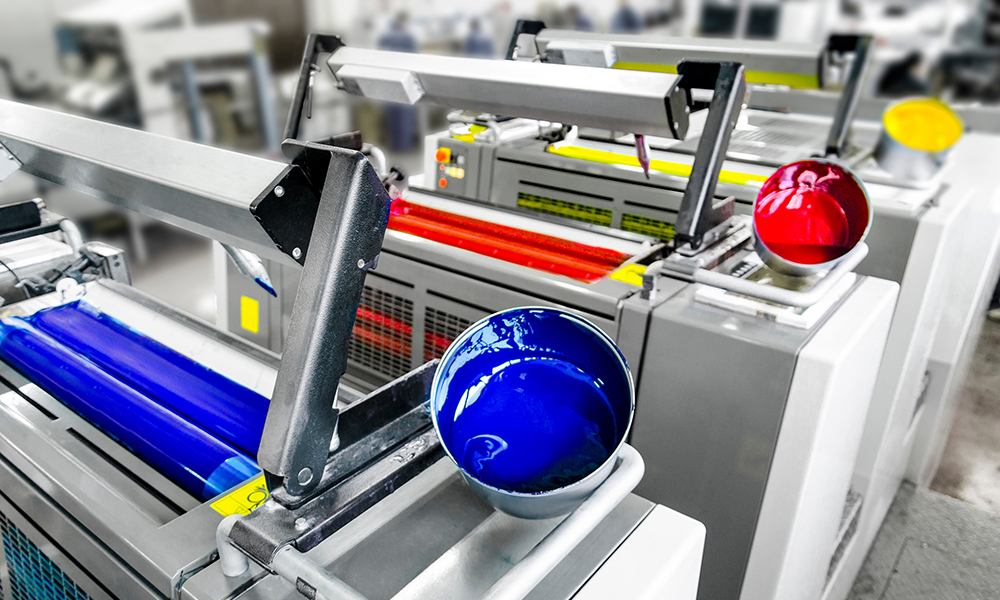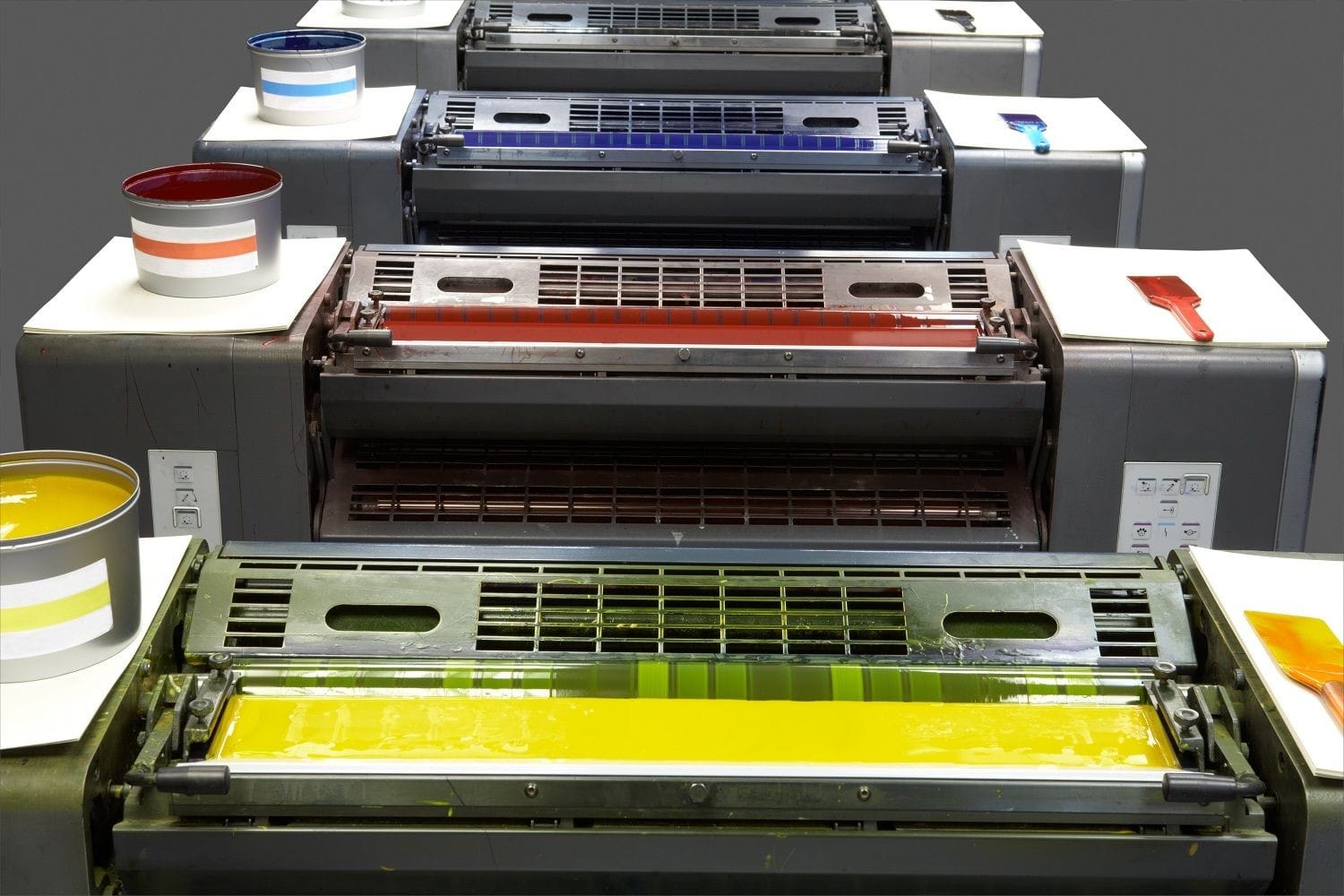The Necessary Guide to Understanding Litho Printing and Its Applications
Litho printing stands as a substantial method in the printing market, rooted in the concepts of oil and water repulsion. This technique not only provides high-quality pictures however additionally deals with various business requirements. Its applications vary from marketing materials to product packaging, showcasing its convenience. As the market adapts to brand-new technologies, the evolution of litho printing questions concerning its future and significance in an electronic landscape. What exists ahead for this sustaining method?

What Is Litho Printing?
Litho printing, a commonly utilized printing method, relies upon the concept of oil and water repulsion. This technique utilizes a level printing surface area, commonly a steel plate, which is dealt with to assure that the photo locations are responsive to oil-based inks while the non-image areas repel them. The process begins with the creation of an image on the plate, frequently through illustration or photo methods. When the picture is prepared, the plate is dampened with water, followed by the application of ink. The ink sticks just to the picture areas, allowing for precise recreation of graphics and message. Litho printing is favored for its ability to produce high-quality prints with fine information and lively colors. It is commonly made use of in industrial applications, including newspapers, publications, and product packaging, showcasing its flexibility and efficiency in fulfilling the demands of modern printing.
The Background of Lithography
Lithography is a modern-day printing staple, its beginnings trace back to the late 18th century when German dramatist Alois Senefelder created the technique in 1796. Developed as an approach for recreating messages and images, lithography made use of a flat rock surface to produce prints through a chemical procedure. Senefelder's development enabled greater adaptability and artistic expression contrasted to previous printing methods.By the 19th century, lithography gained extensive approval, ending up being a preferred choice amongst musicians and publishers. It allowed the automation of pictures, maps, and posters, especially impacting the printing market. The strategy even more progressed with the intro of lithographic presses, enhancing effectiveness and quality.As the commercial revolution progressed, lithography adapted to fulfill the demands of commercial printing, leading the way for modern applications. Today, it remains a necessary technique in different markets, consisting of posting, packaging, and fine art reproduction.
Exactly How Litho Printing Functions
A vital attribute of litho printing is its reliance on the principle of oil and water repulsion - litho printing. In this process, images are moved from a flat surface area, typically a steel or polymer plate, to paper. Home plate is dealt with so that the areas meant for printing draw in ink, while the non-image locations repel it because of their affinity for water. The printing starts by wetting home plate with water, which sticks to the non-image locations. Subsequently, an oil-based ink is applied, sticking only to the intended photo areas.When the plate comes into contact with the substrate, the ink is moved, developing a print. The litho printing procedure can producing top quality photos with fine detail. It is frequently utilized for mass manufacturing as a result of its performance and uniformity, making it a favored method for business printing applications
Advantages of Litho Printing
One remarkable advantage of litho printing is its capacity to create premium images continually, making it an optimal choice for business jobs. This printing approach makes use of a flat printing plate, ensuring also ink distribution and sharp information. Litho printing is also renowned for its shade precision, allowing vibrant and true-to-life recreations, which is necessary for branding materials.Moreover, it supports a wide array of substratums, including paper, cardboard, and also certain plastics, improving its versatility. The procedure is cost-effective for huge runs, as economies of range decrease per-unit prices. On top of that, litho printing has a fast turnaround time, enabling for effective production schedules.Its longevity also suggests that printed materials stand up to fading, guaranteeing that the end product preserves its visual charm with time. In general, these benefits make litho publishing a preferred option throughout numerous markets, adding to its enduring popularity.
Applications of Litho Printing in Service
As organizations increasingly look for reliable and top quality printing options, litho printing becomes a crucial gamer in numerous applications. This technique is especially preferred for producing advertising materials such as brochures, flyers, and brochures, thanks to its capacity to supply vibrant colors and sharp images. In addition, litho printing is frequently employed for packaging solutions, allowing companies to create eye-catching labels and boxes that enhance product appeal.In the sector of business identity, litho printing is critical in generating specialist stationery, calling card, and advertising merchandise, which help reinforce brand name recognition. It is extensively made use of in the posting industry for printed products such as publications and publications, where regular high quality is critical. On the whole, litho printing's adaptability and effectiveness make it a vital tool for organizations intending to communicate efficiently and develop a solid market visibility.
Artistic Uses of Litho Printing
Litho printing functions as a versatile medium in the domain name of printmaking, offering artists an one-of-a-kind technique to express their creative thinking. This method allows for a variety of imaginative applications, from standard prints to contemporary analyses. By exploring the subtleties of litho printing, artists can harness its distinct top qualities to improve their job.

Printmaking Techniques Review
The artistry of printmaking incorporates a diverse variety of techniques, with litho printing standing apart for its one-of-a-kind method to picture production. This method counts on the concept of oil and water repulsion, allowing artists to attract straight onto a limestone or steel plate with a greasy medium. As soon as prepared, the plate is moistened and tattooed, moving the image onto paper through stress. Litho printing is commemorated for its ability to produce great details and rich tonal variants, making it a popular selection amongst artists. Furthermore, the procedure is functional, suiting both traditional methods and modern adaptations. This versatility enables litho printing to bridge numerous imaginative designs, enriching the printmaking landscape with its distinctive qualities and abilities.
One-of-a-kind Artistic Applications
Discovering the unique creative applications of litho printing discloses its impressive versatility in various creative fields. Artists utilize litho printing to create intricate designs and textures, enabling expressive and in-depth jobs. The process assists in the reproduction of vibrant colors, making it optimal for pictures visit this page and art prints. Numerous contemporary artists accept lithography for its capability to combine traditional techniques with modern-day principles, causing ingenious artwork. Additionally, litho printing is frequently employed in the manufacturing of limited version prints, boosting their worth and appeal. The tactile top quality of litho prints includes an unique dimension, bring in collection agencies and art lovers alike. Overall, litho printing continues to be a significant tool for creative expression, bridging timeless techniques with contemporary creative thinking.
The Future of Litho Printing in a Digital Globe
As the printing industry advances, litho printing deals with the challenge of incorporating electronic innovations to stay appropriate. Approaches focused on electronic assimilation, along with fads in sustainability and advancement, will form its future - litho printing. Understanding these characteristics is necessary for sector stakeholders aiming to adjust to a quickly altering landscape
Digital Assimilation Strategies
A growing variety of litho printing firms are welcoming electronic assimilation methods to remain competitive in a progressively electronic landscape. By incorporating digital operations, these companies can improve processes and boost efficiency. This integration permits real-time information management and improved interaction between divisions, decreasing turnaround times noticeably. Furthermore, electronic devices make it possible for much better customization and customization of printed materials, accommodating details client needs. Companies are additionally embracing crossbreed printing solutions that integrate standard litho strategies with digital innovations, providing flexibility in manufacturing. Leveraging information analytics helps in comprehending market patterns and consumer preferences, enabling businesses to make informed decisions. In general, electronic combination is ending up being necessary for litho printing business intending to innovate and reply to advancing market requirements.
Sustainability and Technology Fads

Frequently Asked Concerns
What Products Are Typically Utilized in Litho Printing?
The materials frequently made use of in litho printing include aluminum plates, ink, water, and paper. Each part plays a crucial duty in the printing procedure, ensuring high-quality photo recreation and efficient transfer of ink onto the substrate.
How Does Litho Printing Compare to Digital Printing?
Litho printing provides exceptional shade uniformity and high quality for large runs, while electronic printing succeeds in short runs and personalization. Each approach has distinctive navigate to these guys advantages, satisfying different needs based upon manufacturing scale and cost-efficiency.
What Is the Regular Turn-around Time for Litho Printing Projects?
The regular turn-around time for litho printing jobs differs, typically ranging from a couple of days to several weeks. Aspects affecting this timeframe consist of job intricacy, quantity, and needed completing processes, influencing general production schedules.
Can Litho Printing Accommodate Customized Sizes and Formats?
Litho printing can without a doubt fit customized dimensions and formats, allowing for versatility in layout. This versatility enables clients to accomplish special print results tailored to their details demands, boosting the overall performance of their projects.
What Are the Ecological Influences of Litho Printing?
The environmental effects of litho printing include resource intake, chemical use, and waste generation. However, innovations in lasting techniques and eco-friendly products are gradually lowering these unfavorable impacts, promoting a much more environmentally liable approach to printing.